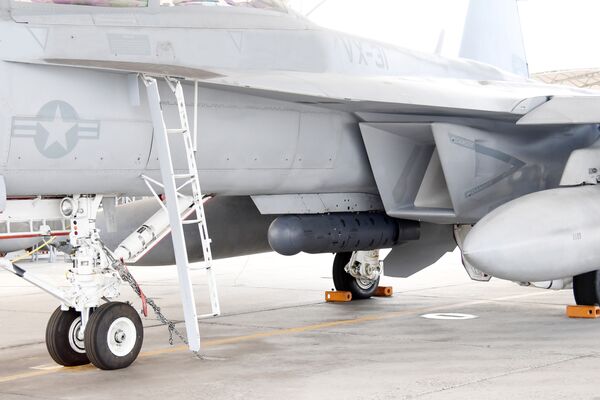
A Litening pod mounted on the centreline of a US Navy F/A-18F for testing. (Northrop Grumman)
The US Navy (USN) has completed initial flight tests to integrate the Northrop Grumman AN/AAQ-28 Litening targeting pod onto the Boeing F/A-18E/F Super Hornet, the company announced on 4 November.
Testing, which began in July 2022, entailed “more than 30 flights”, James Conroy, Northrop Grumman's vice-president of navigation, targeting and survivability, told Janes on 5 November. Conroy said that he expects three additional test flights to “confirm the pod's readiness to withstand the forces of carrier launch and recovery”. The USN told Janes on 6 November that software integration with the F/A-18E/F's internal systems is the next item on the testing checklist.
The USN declined to specify which units would first deploy with the pods, citing operational security, but Northrop Grumman told Janes that Litenings have already been sent to both Naval Air Station (NAS) Oceana, Virginia, and NAS Lemoore, California, the USN's primary Super Hornet operating bases. The USN said that it expects to declare the pod operational in the boreal spring of 2025.
The Litening pods are to be mounted to existing weapons stations aboard the F/A-18E/F rather than receive a dedicated mount.
USN F/A-18E/Fs are already integrated with Raytheon's AN/ASQ-228 Advanced Targeting Forward-Looking Infrared (ATFLIR) targeting pod. The USN initiated the process of replacing or augmenting ATFLIR in 2019, seeking to lower life-cycle and sustainment costs.
Australia also operates a fleet of F/A-18E/Fs and is interested in adding Litening to its arsenal. “We have had discussions with the Royal Australian Air Force on the topic, and it is their stated intention to follow the US Navy's lead,” said Conroy.
Looking to read the full article?
Gain unlimited access to Janes news and more...







